Can Chapstick Trigger Cold Sores? Insights and Facts
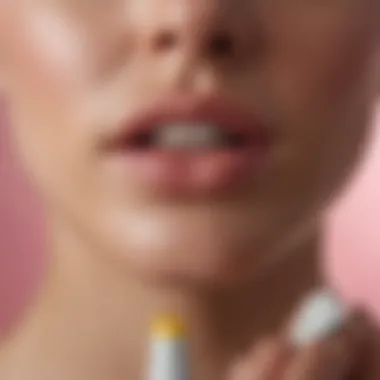
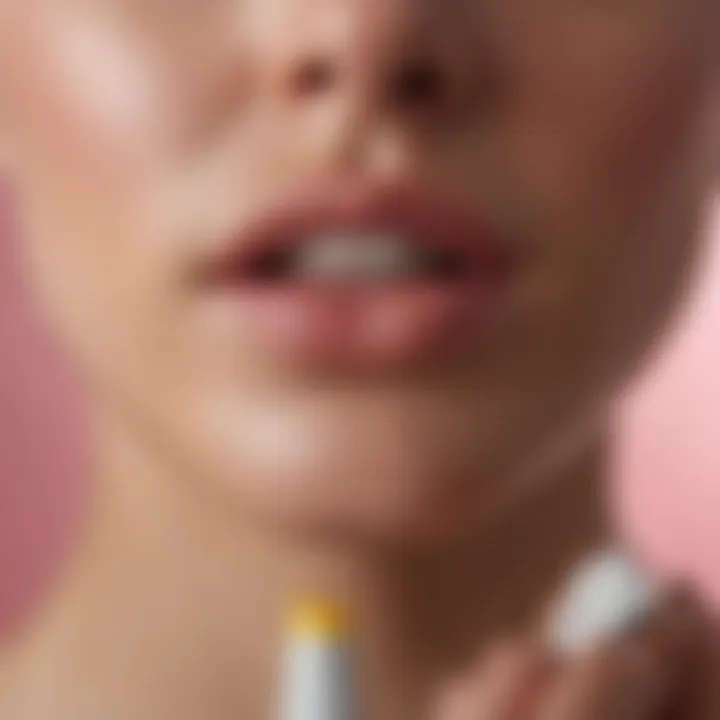
Intro
Lip care is often taken for granted, but it is more complex than many might assume. One widely used product is Chapstick, a lip balm that aims to soothe and protect chapped lips. However, for some individuals, using it might correlate with the painful emergence of cold sores. This article examines this intriguing relationship from various angles.
Cold sores are primarily caused by the herpes simplex virus, which, once contracted, remains dormant in the body, ready to flare up under certain conditions. Some people notice that applying lip balms seems to prompt these outbreaks, leading to questions about the ingredients in these products and their potential role.
In the following sections, we’ll delve into the composition of Chapstick, the science behind cold sores, and offer prevention strategies alongside alternative lip care options. By breaking down the facts, we’ll help clarify whether there’s merit to the concerns surrounding Chapstick use and its relationship with cold sores.
Understanding Cold Sores
Cold sores are more than just unsightly blisters; they can be a source of discomfort and anxiety. They usually manifest as small, fluid-filled lesions on or around the lips. But what causes them? The main culprit is the herpes simplex virus, commonly known as HSV-1.
Triggers for Cold Sores
It’s essential to recognize what can trigger an outbreak:
- Stress: High tension can lead to weakened immunity.
- Illness: Common colds or flu can exacerbate conditions for a cold sore to pop up.
- Weather: Exposure to sun or extreme temperatures can dry out lips and encourage outbreaks.
- Hormonal Changes: Fluctuations can also upset the balance and lead to blisters.
Lip Balm Ingredients
Many lip balms, including Chapstick, are formulated with a mix of ingredients that claim to lock in moisture. However, some of these components may irritate sensitive skin or interact poorly with the virus.
Common Ingredients in Chapstick
- Petrolatum: Used for moisture retention.
- Beeswax: Offers a natural barrier.
- Flavoring Agents: Sometimes, these can be overly strong and lead to irritation.
Before assuming that Chapstick is the enemy, it’s crucial to dissect these ingredients. Some individuals might have specific sensitivities or allergies that can worsen their lip condition.
Expert Insights and Recommendations
While scientific studies specifically linking Chapstick to cold sores are scant, dermatologists suggest cautious use of lip products, especially during outbreaks.
What Experts Advise
- Opt for Fragrance-Free Products: Many experts recommend avoiding flavored or scented balms as they might contain irritants that trigger cold sore outbreaks.
- Keep Lips Moisturized: Use a balm that feels good on your lips and helps prevent drying.
"Choosing the right lip product is essential. If you're prone to cold sores, even seemingly benign ingredients can be problematic." - Dermatologist Dr. Jane Smith
Preventive Measures
To effectively ward off cold sores, consider these strategies beyond lip balm selection:
- Avoid Sharing Products: Cold sores are contagious.
- Use Sunscreen on Lips: Protect from harsh UV exposure.
- Maintain Healthy Habits: Get enough sleep and eat well to support your immune system.
Alternatives to Traditional Lip Balms
For those nervous about using traditional lip balms like Chapstick, there are alternatives on the market designed with sensitive skin in mind. Look for products that contain natural ingredients or avoid petroleum-based components.
Understanding Cold Sores
The threat of cold sores can hang over many like a cloud on a sunny day. This pesky condition, caused primarily by the herpes simplex virus, is a concern for many, particularly among women who tend to prioritize their lip care. Understanding cold sores is essential not only for recognizing their symptoms but also for preventing potential outbreaks, which can impact one’s social life and emotional well-being.
By delving into the intricate details of what cold sores are, one gains insight not just into their appearance but also their underlying causes. This knowledge sets the stage for informed discussions about lip care practices, especially the use of products like Chapstick.
One striking element of cold sores is their sudden onset, often preceded by an itching or tingling sensation. Identifying these early symptoms can make all the difference, and being armed with knowledge enables individuals to respond swiftly. Prevention is always better than cure, as they say.
Definition and Symptoms


Cold sores, also known as fever blisters, are small blisters that typically form on or around the lips. These fluid-filled bubbles can be quite unsettling, not only for the discomfort they bring but also for their visibility. Symptoms may vary from person to person, but here are some common indicators:
- Tingling or itching: Before the blisters appear, many report a tingling or itchy sensation around the mouth area.
- Red bumps: Shortly after the initial symptoms, small red bumps may form, leading to blisters in the following days.
- Fluid-filled blisters: These blisters will eventually burst, ooze, and then crust over, often taking several days to heal completely.
- Pain or discomfort: Alongside visual changes, there may be discomfort or pain around the affected area.
Cold sores are caused by the herpes simplex virus, primarily type 1, although type 2 can also contribute. Recognizing these symptoms helps in early intervention, which can reduce severity and duration.
Causes and Triggers
The emergence of cold sores can be linked to a variety of causes and triggers. Understanding these can empower individuals to make informed choices about their lip care and lifestyle. Some of the primary causes include:
- Herpes Simplex Virus: As noted, this virus is the primary culprit, often lying dormant until triggered. Many people contract it during childhood, often unknowingly.
- Stress: Stress can be a major trigger for outbreaks. When the body is under stress, immune responses can weaken, allowing the virus to resurface.
- Illness: Just like stress, getting sick or having a fever can initiate an outbreak. The body is busy fighting off an illness, which may give the virus an opportunity to reactivate.
- Hormonal changes: Menstrual cycles and hormonal shifts can also play a part, which is particularly relevant for women.
- Sun exposure: Overexposure to the sun can dry out the lips and potentially prompt an outbreak, especially if protective measures aren't taken.
Managing these triggers is crucial in the preventive strategy against cold sores. With proper understanding, individuals can mitigate the risks associated with outbreaks and better navigate the choices they make in lip care products.
The Role of Herpes Simplex Virus
The herpes simplex virus (HSV) is at the heart of our discussion surrounding cold sores. Understanding this virus is vital as it not only helps clarify how cold sores develop but also sheds light on interactions with products like Chapstick. Cold sores, also incorrectly termed fever blisters, are often linked to HSV. Recognizing the role of this virus is essential for anyone concerned about the potential triggers and management of cold sores.
Types of Herpes Simplex Virus
There are two distinct types of herpes simplex viruses: HSV-1 and HSV-2.
- HSV-1 primarily causes oral herpes, leading to cold sores around the lips and mouth. Most people contract this version in childhood through non-sexual contact, such as kissing a family member.
- HSV-2, on the other hand, is typically associated with genital herpes and is usually spread through sexual contact.
While HSV-2 might be less relevant in the context of cold sores, it’s worth noting that both strains can be transmitted. HSV-1 can be spread to the genital area through oral sex, showing that the lines between these types are sometimes blurred. The prevalence of these viruses makes it critical for individuals to maintain good hygiene practices.
Transmission and Infection
The transmission of herpes is straightforward yet insidious. One can contract the virus without experiencing any visible symptoms. Here are some key transmission pathways:
- Direct Contact: Most often, the virus is passed on through contact with an infected area. This could be kissing a person with an active cold sore, touching the sores, or even sharing utensils.
- Asymptomatic Shedding: Perhaps the most perplexing aspect of HSV is asymptomatic viral shedding. This means the virus can still be present on the skin or mucous surfaces even without visible symptoms. Therefore, one could unknowingly pass the virus on to others.
- Environmental Survivability: The virus can survive on surfaces for a brief period; a person can contract the virus from items that have been contaminated, although this is rarer than direct contact.
It's crucial for those who’ve had cold sores to practice caution, especially during outbreaks. Key recommendations include:
- Avoiding Close Contact with individuals, particularly young ones or those with compromised immune systems.
- Personal Hygiene like washing hands frequently and avoiding sharing lip products, including Chapstick, during outbreaks.
"Herpes simplex viruses are pervasive, often lurking quietly yet remaining highly contagious, a reality everyone should be mindful of."
In summary, comprehending the role of herpes simplex virus is not just about identifying a problem but also about understanding how it can spread, the types involved, and how to manage the risks associated with it. Knowledge is power, particularly when it comes to preventing those unsightly cold sores from making an unwelcomed appearance.
Lip Care Products: An Overview
In any discussion about skin health, one cannot overlook the significance of lip care products. Those little tubes we carry around can often be a lifeline in maintaining lip hydration and preventing chapped skin. But lip care isn't just a matter of comfort; it plays a crucial role in our overall well-being. A well-chosen lip product not only protects against the elements, it can also help avert potential problems like cold sores, especially for those who are susceptible.
Lip balms and chapsticks have been around for ages, and they serve multiple purposes—hydration, protection, and in some cases, sun or wind shielding. They come in all shapes and sizes, from the classic tin of beeswax to luxurious, tinted options. The right product can keep lips moist, soft and even enhance the overall appearance. However, picking one isn't always straightforward.
Certain ingredients might trigger reactions in sensitive individuals, and some formulations may even aggravate pre-existing conditions, like herpes simplex, which can lead to cold sores. Therefore, it's imperative to understand what goes into these products. You wouldn't want to pick up just any brand without knowing what you’re applying onto your lips.
The elements in lip care products warrant special attention as they dictate not only how effective the product is but also its potential risks.
What is Chapstick?
Chapstick is more than just a brand name; it has become synonymous with lip balm for many. Originally developed as a way to combat dry and cracked lips, Chapstick has evolved into a go-to solution for lip care. So what is it, really? At its core, Chapstick is a lip balm product designed to moisturize and protect your lips. Its primary function is simple—to create a barrier that prevents moisture loss while also soothing and protecting the lips from environmental factors.
However, the term "Chapstick" often is used generically. Many products on the market carry similar purposes but may vary widely in their compositions and effectiveness. There are flavored versions, medicated types for healing, and even tinted options to add a splash of color.
Common Ingredients in Chapstick
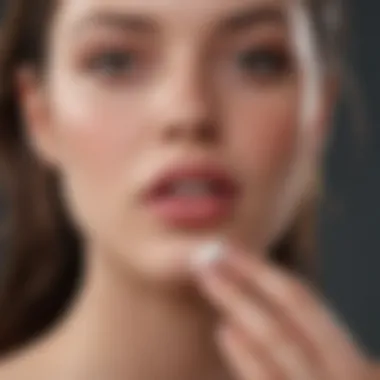
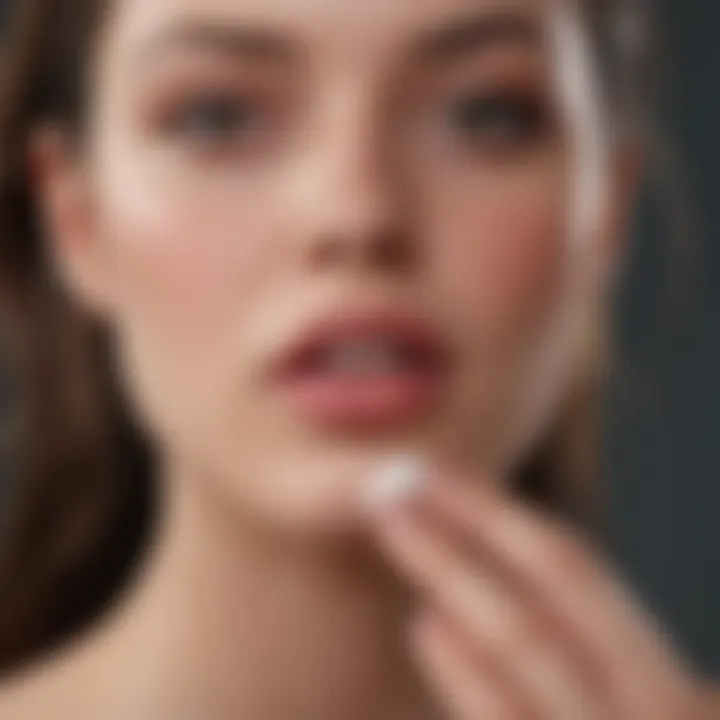
The ingredients in a tube of Chapstick can reveal a lot about its effectiveness. Here are some common elements to consider:
- Petrolatum: Often a primary component, it acts as a sealant, locking moisture in while preventing irritants from entering.
- Shea Butter: A natural emollient that nourishes and softens the skin. Highly recommended for dry environments.
- Beeswax: Known for its ability to create a protective layer and aid in retaining moisture, it has natural anti-inflammatory properties.
- Flavorings: These make the product more appealing but can sometimes cause irritation. Users should be cautious about overly fragrant options.
- SPF: Some Chapstick versions contain sunblock to offer protection against UV rays, which is especially vital in outdoor settings.
"The ingredients can mean the difference between a product that soothes and one that causes irritation. Always read the label."
Though these ingredients often deliver benefits, some might be questionable for individuals with sensitivities. Always consider your personal needs and preferences when selecting a chapstick. Take the time to familiarize yourself with how each ingredient might affect you, particularly if you have a history of cold sores or any related conditions.
Can Chapstick Trigger Cold Sores?
Understanding whether lip care products, like Chapstick, could potentially trigger the onset of cold sores is crucial for anyone who has ever experienced the distressing symptoms of those pesky blisters. Cold sores are not just cosmetic concerns; they can affect one’s confidence and quality of life. Furthermore, for individuals who suffer frequently from outbreaks, identifying triggers is key to prevention.
The focus on Chapstick is relevant due to its widespread use among a diverse audience. Many rely on it to manage dry or chapped lips, especially during colder months when skin can become parched. However, there are elements to consider regarding its safety, especially in relation to herpes simplex virus carriers.
Potential Risks Associated with Chapstick Use
Despite its popularity, Chapstick may carry certain risks, particularly for those vulnerable to cold sore outbreaks. The foundation of these risks often lies in the ingredients used in various formulas. Some products might contain flavors, fragrances, or preservatives that can irritate sensitive skin. For susceptible individuals, the introduction of these irritants could provoke an immune response, setting the stage for a cold sore to develop.
Additionally, using Chapstick can lead to a false sense of security. Many believe that because an application is cleansing and comforting, it can't possibly lead to outbreaks. However, when these products are applied onto or even near already affected areas, they may inadvertently spread the virus or exacerbate existing conditions. Here are a few potential risks to keep in mind:
- Reapplication: Often, users apply Chapstick multiple times a day, which might bring viruses closer to affected skin.
- Shared Use: Sharing lip products increases the risk of transmission and infection.
"Using lip balm should be a soothing experience, but for some, it can be a catalyst for discomfort."
Awareness of these risks is essential. While Chapstick can prompt hydration and relief, discerning users should evaluate what’s in their chosen product. Consider opting for variants without common irritants like synthetic fragrances or additives.
Individual Sensitivities
Everyone’s skin behaves differently. What works for one person may be a recipe for disaster for another. This is particularly true when it comes to lip products. Individual sensitivities can greatly influence how a person might respond to Chapstick.
One person may apply a flavored balm without consequence while another might break out in cold sores shortly after. This disparity could stem from genetic factors, existing skin conditions, or even environmental influences. For instance, someone who has a history of allergic reactions may find themselves at higher risk when using flavored or scented Chapstick varieties.
Several key factors influence individual reactions to lip care products:
- Allergies: People can be sensitive to certain natural ingredients such as beeswax, which is often found in many balms.
- Hormonal Changes: Fluctuations in hormones may influence skin responsiveness to external products and can trigger outbreaks in some women.
- Diet: Certain foods might aggravate or alleviate symptoms, influencing how one reacts to lip care items.
Individuals who frequently deal with cold sores should carefully monitor their skin’s reactions after trying new products. Keeping a journal reflecting product types, flavors, and any subsequent outbreaks can provide insight into what works well and what doesn’t.
Ultimately, understanding one's own sensitivities and risks will empower users to make informed choices about their lip care routines and, ideally, minimize unwanted cold sore occurrences.
Recognizing Signs of Cold Sores
Identifying the signs of cold sores is crucial for anyone who is prone to outbreaks. Early recognition can make a world of difference in managing symptoms and minimizing discomfort. By understanding the signs, you not only empower yourself but also set the stage for timely interventions. Cold sores often start with a tingling sensation around the lips or mouth, serving as a warning beacon that an outbreak may be imminent. Being able to detect these early symptoms can help you act before the sore fully develops, potentially shortening its duration.
Early Symptoms to Watch For
Early symptoms that signal an impending cold sore can range quite a bit in severity and presentation. Here’s a breakdown of what to be on the lookout for:
- Tingling or Itching: This is often the first noticeable symptom, indicating that the herpes virus is reactivating.
- Redness and Swelling: The area around the lip may show signs of inflammation before any physical blisters emerge.
- Burning Sensation: Some individuals experience a burning feeling, which can feel a bit like a sunburn on the affected area.
- Dryness or Cracking: The skin may become unusually dry or cracked, paving the way for the eventual formation of a blister.
Recognizing these signs early can lead to prompt actions, such as applying topical antiviral creams or other remedies, which can lessen the severity of the outbreak.
Identifying Recurrence Patterns
Once you start paying attention to the early symptoms, it’s equally important to note patterns in their recurrence. Many individuals find they tend to have outbreaks in response to similar triggers or conditions. Here’s how you can identify those patterns:
- Time of Year: Cold sores can be more common during colder months when the immune system may be slightly weakened.
- Stress Levels: High stress often leads to outbreaks. Keeping a journal can help you correlate your stress with flare-ups.
- Hormonal Changes: Many women report an increase in cold sores during their menstrual cycle or menopause.
- Diet and Lifestyle: Certain foods or lack of sleep can also trigger outbreaks, so it’s wise to monitor what you consume and your sleeping habits.
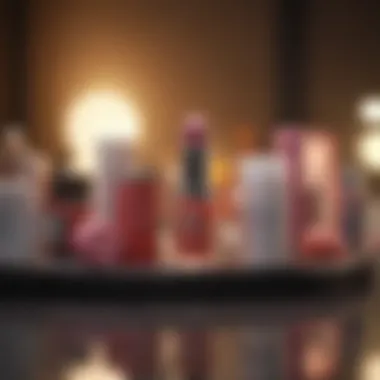
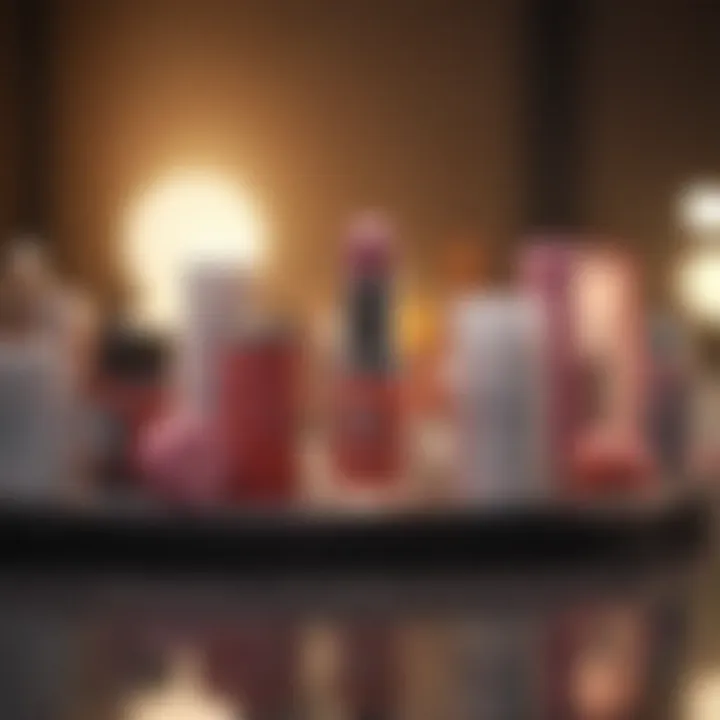
By identifying and documenting these patterns, you can create a preventive strategy tailored to your lifestyle. As the saying goes, knowledge is power, and in this case, it could mean less time suffering and more time feeling your best.
Preventive Measures Against Cold Sores
When it comes to keeping cold sores at bay, understanding preventive measures is crucial for anyone afflicted by this condition, especially those who might be inclined to use lip care products like Chapstick. Cold sores aren’t just an occasional annoyance; they can have lasting emotional and social impacts. Examining effective preventive practices becomes paramount in not only managing outbreaks but also maintaining a sense of confidence.
Employing the right measures can dramatically reduce the chances of a cold sore flaring up. For many, recognizing potential triggers can be the first line of defense. Sun exposure, stress, and even hormonal shifts can set the stage for an outbreak. If one learns to spot these triggers ahead of time, they can take proactive steps, whether it's through lifestyle adjustments or skin care choices, reducing the overall risk.
Choosing the Right Lip Care Product
The choice of lip care products cannot be overstated. When selecting a lip balm, it's essential to keep an eye on its ingredients. Many commercial lip balms, including popular brands, can contain additives that irritate sensitive skin or that might even contain allergens. Ingredients like fragrance or menthol may provide a cooling sensation but could inadvertently trigger sensitivity in some users. Here are a few points to consider when choosing a lip care product:
- Natural Ingredients: Products that use natural oils (like coconut oil or jojoba oil) tend to be more nourishing and less likely to cause irritation.
- No Additives: Avoid items with added fragrances or artificial colors. Stick to simple formulas.
- SPF Protection: If out in the sun, select a balm that provides SPF protection to shield the skin from harmful UV rays, which can provoke cold sore outbreaks.
In essence, opting for a gentle, straightforward lip balm with a focus on hydration can be a wise and preventive approach.
Managing Triggers and Stress
Stress management is often overlooked yet plays a vital role in overall skin health, including the prevention of cold sores. Stress can wreak havoc on one's immune system, paving the way for the herpes simplex virus to rear its ugly head. Effective strategies to manage stress can be a game changer, offering benefits that ripple into other areas of health as well. Some practical methods might include:
- Mindfulness Practices: Engaging in meditation or yoga to promote relaxation.
- Regular Exercise: Physical activity is not just good for the body; it helps to clear the mind and influence mood positively.
- Balanced Diet: Eating fruits, vegetables, and whole grains can enhance energy levels and contribute to overall well-being.
By consciously managing stress levels, one can bolster their defenses against cold sore eruptions. > "An ounce of prevention is worth a pound of cure; small lifestyle changes can yield significant benefits."
In summary, preventive measures against cold sores encompass being selective with lip care products and actively managing stress. These approaches not only lower the likelihood of an outbreak but also foster a holistic view of personal care, ensuring that skin remains healthy and resilient.
Alternative Lip Care Options
The quest for smooth, supple lips often leads many to chapstick, but it’s vital to explore the available alternatives that may better suit individual needs. Some people may find themselves sensitive to certain ingredients in standard lip balms, which might activate cold sore outbreaks. Yes, while Chapstick provides protection in many cases, opting for alternative lip care products can have significant benefits in preventing skin irritation and maintaining overall lip health. This section delves into natural options and do-it-yourself solutions that can cater to various preferences and needs, offering readers healthier choices.
Natural and Organic Lip Balms
Natural and organic lip balms have grown in popularity, and for good reasons. These products typically forego synthetic additives and harsh chemicals, which can lead to potential skin reactions. Packed with nourishing ingredients like shea butter, coconut oil, and essential oils, they offer moisture and relief without the risk of exacerbating cold sore issues.
Some merits of choosing natural and organic options include:
- Gentler on Skin: Many of these products use simple formulations free from artificial dyes or fragrances.
- Nutrient-Rich: Ingredients in organic products often bring added benefits, such as vitamins that help heal chapped lips.
- Less Likelihood of Irritation: People prone to cold sores may have fewer flare-ups due to hypoallergenic formulas.
However, it’s key to check labels carefully, as even seemingly natural products can contain allergens.
"Natural doesn’t always mean safe. It’s crucial to be aware of your sensitivities and select wisely."
Brands like Burt’s Bees and badger Bomb have a good reputation among users, but personal preference plays a huge role in what works best. Experimenting with a few options can lead to the best fit for one’s unique skin sensitivities.
DIY Lip Care Solutions
Homemade lip care is another viable option, giving users complete control over what goes on their skin. DIY lip care solutions can be tailored precisely to meet personal preferences and dietary concerns if applicable. Not only can these be cost-effective—many common ingredients are already found in the kitchen—but they also allow for full transparency regarding what one is applying.
Some simple DIY lip care products include:
- Coconut Oil Balm: A mixture made from coconut oil, beeswax, and vitamin E offers nourishment and a natural shine.
- Shea Butter Stick: Melt shea butter, mix it with a carrier oil like olive or almond, pour it into a small container, and let it solidify.
- Honey and Lemon Scrub: A gentle lip exfoliator combining honey and lemon can remove dead skin and improve overall lip appearance without irritation.
To create an effective lip balm:
Ingredients:
- 1 tablespoon coconut oil
- 1 tablespoon beeswax (grated)
- 5 drops essential oil (like peppermint or lavender)
Instructions:
- Mix coconut oil and beeswax in a double boiler.
- Once melted, add essential oils.
- Pour mixture into small containers and allow it to cool completely.







